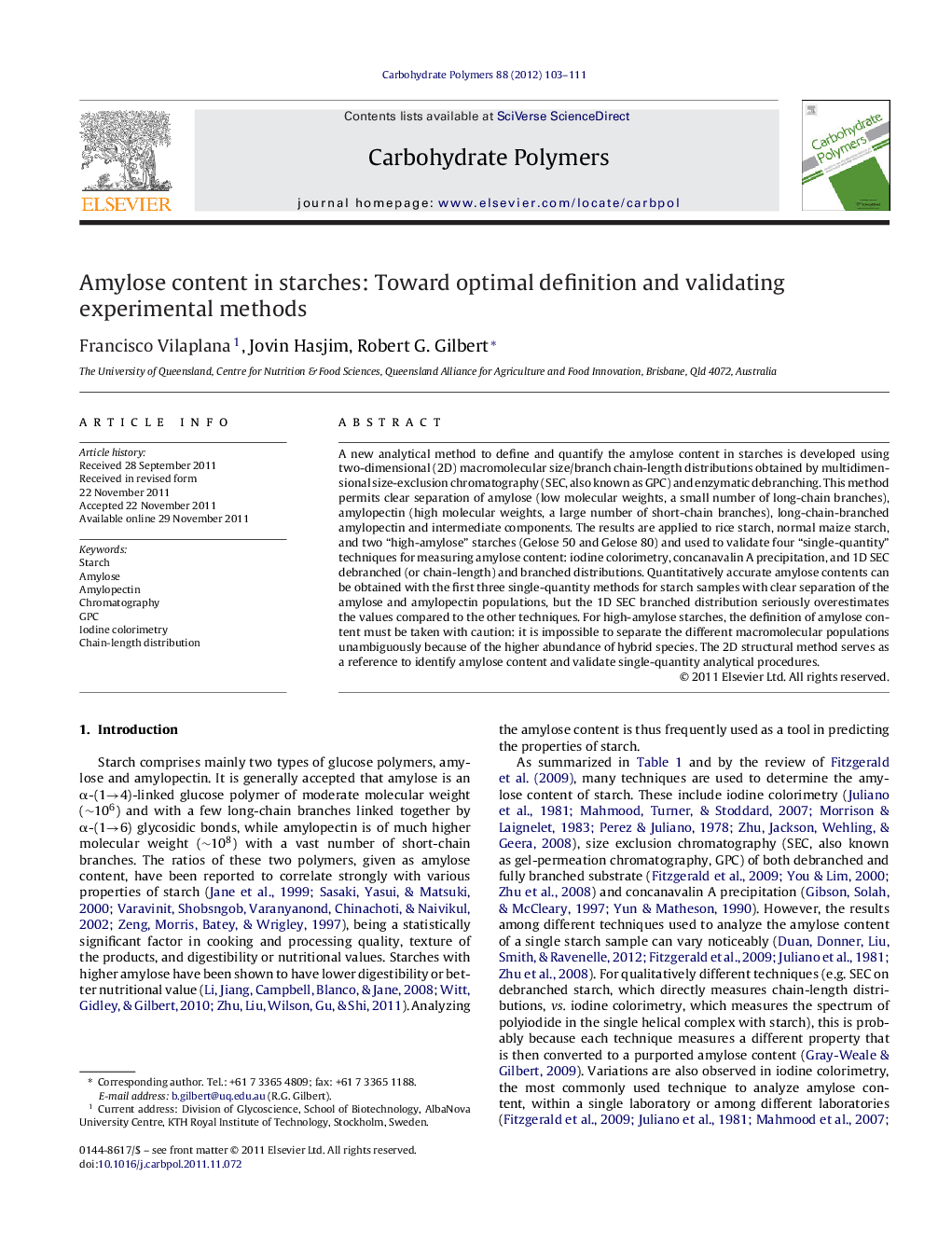| Article ID | Journal | Published Year | Pages | File Type |
|---|---|---|---|---|
| 1384940 | Carbohydrate Polymers | 2012 | 9 Pages |
A new analytical method to define and quantify the amylose content in starches is developed using two-dimensional (2D) macromolecular size/branch chain-length distributions obtained by multidimensional size-exclusion chromatography (SEC, also known as GPC) and enzymatic debranching. This method permits clear separation of amylose (low molecular weights, a small number of long-chain branches), amylopectin (high molecular weights, a large number of short-chain branches), long-chain-branched amylopectin and intermediate components. The results are applied to rice starch, normal maize starch, and two “high-amylose” starches (Gelose 50 and Gelose 80) and used to validate four “single-quantity” techniques for measuring amylose content: iodine colorimetry, concanavalin A precipitation, and 1D SEC debranched (or chain-length) and branched distributions. Quantitatively accurate amylose contents can be obtained with the first three single-quantity methods for starch samples with clear separation of the amylose and amylopectin populations, but the 1D SEC branched distribution seriously overestimates the values compared to the other techniques. For high-amylose starches, the definition of amylose content must be taken with caution: it is impossible to separate the different macromolecular populations unambiguously because of the higher abundance of hybrid species. The 2D structural method serves as a reference to identify amylose content and validate single-quantity analytical procedures.
► Amylose content can predict starch quality but answers vary with the technique. ► A new 2D method overcomes these problems. ► It is applicable to both ordinary and high-amylose starches. ► It furnishes a means of validating conventional methods. ► Among conventional techniques, iodine colorimetry is found to be the least reliable.
